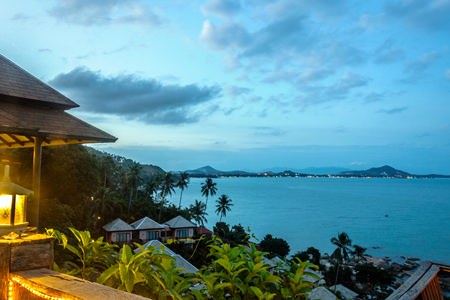While the ongoing political turmoil has certainly had a negative impact on the Bangkok hotel market, Koh Samui by contrast has witnessed only a minimal drop in hotel trading performances. The island’s hotel market has continued to enjoy strong occupancies, according to the latest research conducted by property services firm JLL.
“Koh Samui’s hotel market has remained relatively robust, compared to Bangkok where the demonstrations are concentrated. The average hotel occupancy rate in Samui reached a record of 73% last year, growing by around 5% over 2012,” says Andrew Langdon, Executive Vice President of JLL’s Hotels & Hospitality Group.
 The outlook remains bright for Koh Samui’s hotel industry. (Photo/Wikipedia commons)
The outlook remains bright for Koh Samui’s hotel industry. (Photo/Wikipedia commons)
The growing prominence of Surat Thani airport as a secondary gateway to Samui, in addition to the existing airport, has helped fuel demand for hotels on the island. Visitor arrivals to Samui airport in 2013 grew by 14.5% over 2012 to 1.5 million. However, average length of stay on the island has been declining as a result of the growing prominence of short-stay visitors from the region.
The Average Daily Rate (ADR) recorded a subpar growth of 1% in 2013 to THB 3,940, after declining from 2008 through 2012. Largely driven by strong occupancy, the Revenue per Available Room (RevPAR) grew by 8.9% to THB 2,870 last year.
Presently, there are about 20,000 hotel rooms in Samui. However, the supply pipeline on the island looks set to slow over the next three years and hotel developments that are on the drawing board seem to be targeted at the mid to high end of the tourism market.
“While the major source of demand for hotels on Koh Samui is tourists from Europe, we anticipate a continued emergence of short-stay demand from key Asian source markets. In addition, China, Russia and India visitor markets are likely to be the strongest growth areas in the medium term,” said Mr. Langdon.
“With healthy demand fundamentals and slow growth of new supply, we anticipate a positive occupancy outlook for 2014 with a moderate increase in ADR,” he concluded.




